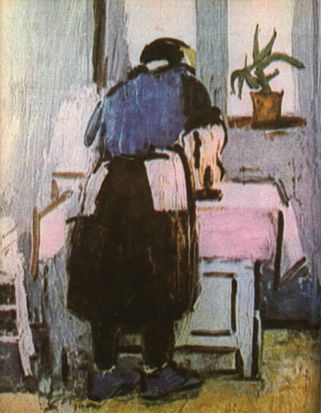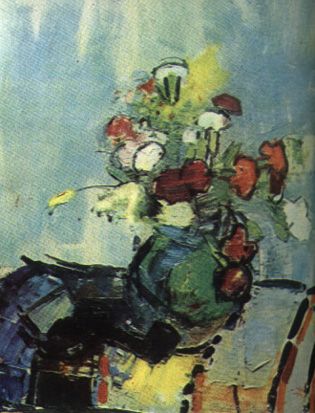Romanian painter. In 1916 in Tulcea, he became an apprentice to Mihail Paraschiv, a local painter. From 1921 to 1928 he studied at the Fine Arts School in Bucharest with painters Professors G.D. Mirea and Camil Ressu. After spending a while with the artists' group known as "the Baia Mare Painting School", he went to Paris, where he studied at the Julian Academy and at Andr Lhote's studio. Returned to Bucharest, he became professor in 1948, and then rector (1957-1968) at the "Nicolae Grigorescu" Fine Arts Institute. Awards: Laureate of the 1930 Official Salon, State Prize in 1955; the "Ion Andreescu" Prize of the Romanian Academy in 1956; people's artist in 1964; member of the Romanian Academy, etc. Ciucurencu could never escape the fascination of the Danube Delta's vast space whom he longed for all his life. To this space with smooth contours, of a unique colour, generously taking the artist into the world of imagination and reflection owes the painter his inspiration . Inspiration was also to come from his Paris years, and especially from Andr Lhote's, his French master, dedication to rigour, construction and pictorial work. The Postimpressionism currents, melted in what was generally known as the "Ecole de Paris", dawned the young Romanian painter upon the worth of a painter's life endeavour: to imbue reality with the artist's sensibility. Ciucurencu, an ardent Luchian's admirer, was as much attracted to the visible world as to an exact perception of his lyrical veins. Ciucurencu's love for the purity of the pictorial image is always present in his pictures, no matter if they are portraits (Self-portrait, 1933; Mama artistului/The artist's mother, 1940; G. Calinescu, 1952), landscapes or still life. A serene character and a passionate colourist, Ciucurencu had a special gift for matching the colours. When painting, he knew how to exploit, out of sheer painting rules, warm and cold hues and bright and dark segments. Lyrical abstraction and orphic compositions were not proper to him, as his high sensibility felt protected only when the reality was in his grasp for being analysed and structured. The painter worked with visible elements, getting them rid of any petty or side aspects and keeping the essential. Thus he could reconstruct the whole which the image had been part of. Take woods for example. Preceding the act of painting, he went through it and decomposed it to such an extent as to get it represented by a few vertical lines, in a uniform, dark colour. These vertical lines drew the trees of the woods, while colours, applied on large surfaces, were meant for verdure, shovels of green or rust-colour leaves, the blue sky expansions, etc. Being always on a brooding mood, Ciucurencu dismissed fortuity and momentariness from his art, to passionately approach reality. Even if with him objects' style and arrangement are important and details are attentively observed, stiffness is never on, because passion guides his hand. His brushwork, putting colours on the canvas, is hardly traceable, it rather looks like a light suggestion coming from his affectionate attachment to the picture. His art is an affirmation of good proportion and situation, of sensibility and creativeness, maintained by colour intuition and a purity of pictorial composition. Images : "Woman Ironing" ; "Flowers" |



































